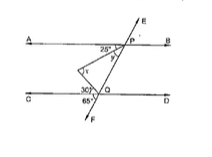If B=0.55, D = 0.45 and N = 1000, then dN/dt = __________
5500
1000
100
4500
The correct Answer is:C
To solve the problem, we need to calculate the rate of change of population size (dN/dt) using the given values for birth rate (B), death rate (D), and initial population size (N).
1. Identify the Given Values:
- Birth rate (B) = 0.55
- Death rate (D) = 0.45
- Initial population size (N) = 1000
2. Calculate the Intrinsic Growth Rate (r):
- The intrinsic growth rate (r) can be calculated using the formula:
r=B−D
- Substitute the values:
r=0.55−0.45=0.10
3. Use the Formula for dN/dt:
- The formula for the rate of change of population size is:
dNdt=r×N
- Substitute the values of r and N:
dNdt=0.10×1000
4. Calculate dN/dt:
- Perform the multiplication:
dNdt=100
Final Answer:
Thus, dNdt=100.
---
- Birth rate (B) = 0.55
- Death rate (D) = 0.45
- Initial population size (N) = 1000
- The intrinsic growth rate (r) can be calculated using the formula:
r=B−D
- Substitute the values:
r=0.55−0.45=0.10
- The formula for the rate of change of population size is:
dNdt=r×N
- Substitute the values of r and N:
dNdt=0.10×1000
- Perform the multiplication:
dNdt=100
Thus, dNdt=100.
Similar Questions
Knowledge Check
If b=65 and d is =45 ,N=100 than find out dN/dt
A2000B1000C200D100If for an A.P., a= 10.5 , d= 0 , dn = 101, then what is the value of tn ?
A0B10.5C111.5D110.5The logistic population growth model, dN/dt=rN (K-N/K), describes a populations growth when an upper limit to growth is assumed. This upper limit to growth is known as the population's ________ and as N gets larger,dN/dt________.
ABiotic potential, increasesBBiotic potential, decreasesCCarrying capacity, increasesDCarrying capacity, decreases
In Figure, AB and CD are parallel lines and transversal EF intersects them at P and Q respectively. If ∠APR=250, ∠RQC=300and ∠CQF=650, then x=550, y=440 (b) x=550, y=450 x=600, y=350 (d) x=350, y=600

View SolutionIn a ABC, if ∠A−∠B=330 and ∠B−∠C=180, then ∠B= 350 (b) 450 560 (d) 550
View SolutionIn a ABC, if ∠A+∠B=1500 and ∠B+∠C=750, then ∠B= 350 (b) 450 550 (d) 250
View SolutionIn a rhombus ABCD, if ∠ACB=40∘, then ∠ADB=(a) 70∘ (b) 45∘ (c) 50∘ (d) 60∘
View SolutionIf a and b are two numbers such that ab = 0 , then (a)a = 0 and b = 0 (b) a = 0 or b = 0 (c) a = 0 and b≠0 (d) b = 0 and a≠0
View Solution
